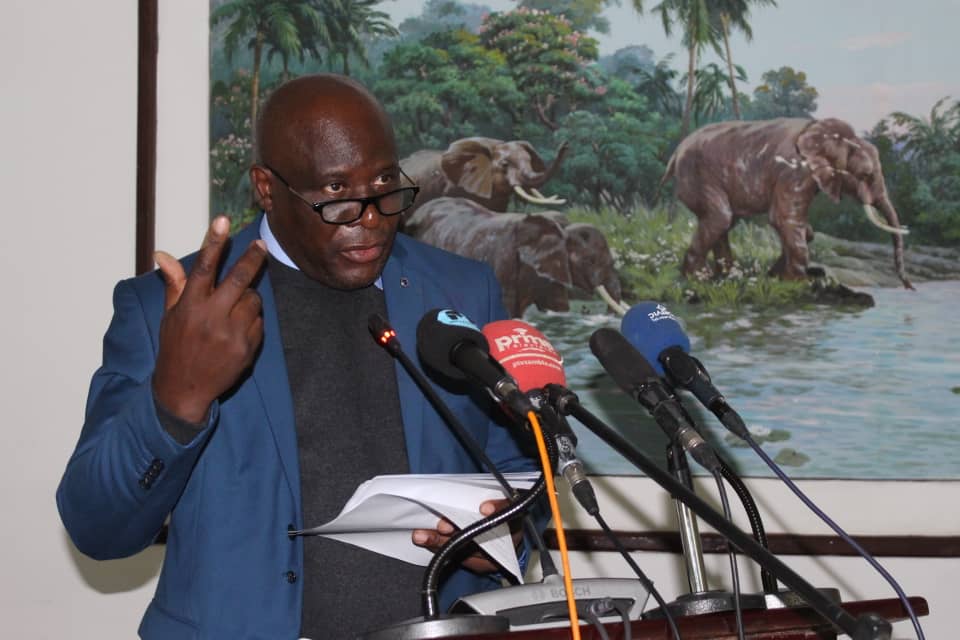When a section of society perceives nuclear power, their minds immediately wander into a negative space such as atomic bombs, missiles and anything related to war, leaving no room for scrutiny of its possible benefits.
However, many of the negative opinions surrounding nuclear energy are rooted in information that is not factual, as nuclear technology has brought tremendous benefits to many countries, including Zambia.
In a bid to enhance education and research in nuclear science and technology, Zambia became a member of the International Atomic Energy Agency (IAEA) in 1969. IAEA is a United Nations (UN) agency responsible for nuclear science and technology.
Furthermore, in 1980, government set up the nuclear analytical laboratory at the National Institute for Scientific and Industrial Research (NISIR) in Lusaka. This laboratory provided the country with nuclear materials such as radioactive isotopes needed to treat food and cancer patients.
With an already established nuclear laboratory in the country to aid healthcare provision, the Zambian government, with technical support from IAEA, completed the construction of the country’s first Cancer Diseases Hospital (CDH) in Lusaka in 2007.
Through radiation therapy, a medical procedure made possible by nuclear technology, the Cancer Diseases Hospital has treated more than 16,000 cancer patients since 2007.
To further accelerate the utilisation of nuclear Technology and science, government in 2018 signed a general contract with the Russian government for the construction of the Centre for Nuclear Science and Technology (CNST) in Chongwe.
Furthermore, a Memorandum of Understanding (MoU) was signed between Zambia and Russia in order for the European country to train 120 Zambian students in various fields of Nuclear Technology and Science.
20 students have so far completed their training, and some of them are currently attached to various government departments.
According to National Energy Programme Implementation Organization (NAPIO) National Coordinator, Dr. Reuben Katebe , the CNST, when fully operational will house a 10 megawatt research reactor to produce both industrial and medical isotopes to be used in mining, agriculture and health sector.
The centre will also be a human resource training facility that will be used to build capacity in nuclear research and development.
” There are two pathways to operate a nuclear power plant, one of them is developing the nuclear power plant directly which starts operations immediately or first develop a research reactor or nuclear centre which is used as a tool to develop the human resource required for the operation of the nuclear power plant as is the case in Zambia,” Katebe said.
He stated that when fully functional, the Centre for Nuclear Science and Technology will embark on radiopharmaceutical production which is critical in the diagnosis and treatment of cancerous cells in human beings.
” Nuclear technology at the centre will also help curb the movement of pests from one region to another through irradiation of agricultural products by destroying insects, pests and other organisms that lead to foodborne diseases. Irradiation is one of the international standards set for successful export of these products,” said Dr. Katebe during a media engagement.
The national coordinator said government decided to engage the media in order for it to sensitize the public on the importance and benefits of nuclear technology.
”It is a requirement to get public acceptance on any nuclear programme before it is implemented, hence the importance for media engagement so that they can help instill knowledge that will build up into acceptance,” Katebe said.
Meanwhile, Ministry of Information and Media Permanent Secretary, Kennedy Kalunga told journalists that when fully implemented, Zambia will become the second country on the African continent after South Africa to have a fully developed nuclear programme.


“When we talk about a nuclear power plant we are talking about a 60 years programme which is intergenerational. That’s why it takes a lot of time to plan because there should be no gaps,” said Kalunga
The permanent secretary added that having a nuclear programme in Zambia will also allow the country to use nuclear technology to check what type of minerals are underground, which will help reduce mining and exploration costs in the mining sector.
And Ryon Collyer, Chief Executive Officer of Rosatom for Central Africa and Southern Africa, said stakeholder involvement is a crucial element when setting up any nuclear facility.
”The media is a vehicle in which factual information is distributed both on nuclear energy as well as on the projects at hand in an open and transparent manner.”
“We all know that nuclear is a very sensitive topic, unfortunately the industry really did start with a bang and since then it has been very difficult to educate people about nuclear technology and how it can actually better their lives,” Collyer said.
To ensure that the nuclear programme is supported by the law, government intends to finalise the development of two Bills that will lead to the establishment of a nuclear regulator and a coordinating agency.
It is concerted efforts by both government and the media that will ensure that the previous public backlash that accompanied intentions to introduce a nuclear programme become a thing of the past.


